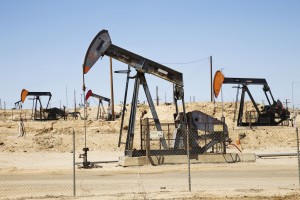
The referenced media source is missing and needs to be re-embedded.
Kern River Oil Field. Credit: Sarah Craig/Faces of Fracking- Permanent regulations on well stimulation. Starting July 1, if an oil or gas company wants to frack a well, they must apply for and receive a permit, follow a number of new transparency requirements, and adhere to stricter rules on chemical and waste handling, in addition to other requirements.
- On July 1 the State certified the statewide environmental impact report (EIR).
- Groundwater monitoring criteria will be finalized and adopted by the State Water Resources Control Board on July 7.
- The independent scientific study on well stimulation will be completed and released the second week of July. The first chapter was released in January by the California Council on Science and Technology.
- The California Air Resources Board (CARB) is developing regulations to address greenhouse gas and health harming air emissions that leak from oil production facilities.
- The Division of Oil, Gas and Geothermal Resources (DOGGR) has proposed a timeline for addressing some 2,500 illegally permitted injection wells and is taking comments through July 13. We are calling for an immediate shutdown of these illegal wells, rather than the slow compliance schedule that DOGGR has proposed.
- SB 248, a bill by Senator Pavley which would help reform the Underground Injection Control (UIC) program, to make sure oil and gas injection wells don't harm groundwater, heads to the Assembly. It narrowly passed the Senate in June. Along with a number of major newspapers, we strongly support this bill.
- A package of bills, some in response to the May 19 oil spill in Santa Barbara which deals with coastal and offshore oil drilling, pipeline safety and oil spill response is moving through the Legislature
Related Posts
Stay Informed
Get the latest updates and actions:
Thanks for signing up!
There was a problem processing your signup. Please try again.


